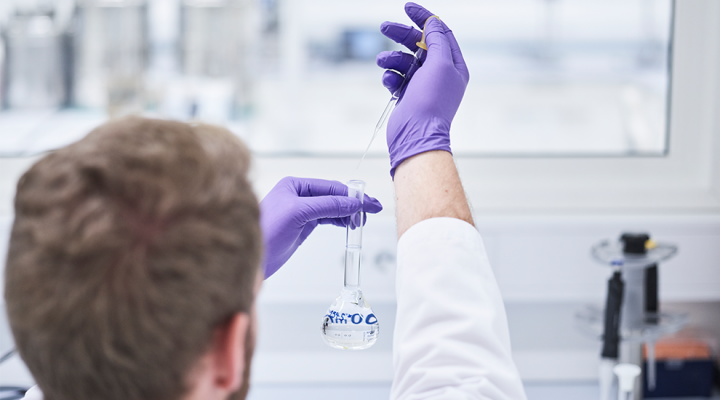From an analytical laboratory’s perspective, cannabis and hemp samples are particularly challenging to analyze. The samples usually contain an appreciable amount of chlorophyll, waxes and other plant material, which make them sticky and greasy, making them hard to work with. For the laboratory, it is crucial that a repeatable sample-preparation protocol is used for all sample types and that it can be adapted, if required. Furthermore, it is important that we invest time and effort to check whether the sample-preparation protocol is appropriate for new sample types received by the laboratory.
Sample homogenization
The first step of the sample preparation is homogenization. This is essential to ensure accurate results, as the samples are usually heterogeneous, especially in the case of plant samples. In a cannabis flower there is a high concentration of cannabinoids in one area, particularly in the trichomes, and a low concentration closer to the leaves and the stems. At PharmaHemp Laboratories, a laboratory grinder is used to crush the plant samples into very small particles, ensuring that a representative sample is analyzed. Moreover, smaller particle sizes lead to higher recoveries of cannabinoids during the extraction process.
Extraction of cannabinoids
After the sample is homogenized, a small portion of it is weighed into a volumetric flask on an analytical balance and the extraction solution is added to the bottom of a meniscus on the volumetric flask. Next, the extraction is performed, during which the cannabinoids are extracted into the extraction solution. PharmaHemp Laboratories uses ultrasound-assisted extraction (UAE), which is an effective and rapid technique for extracting cannabinoids, as it improves thediffusion process by accelerating interphase mass transfer. In the case of plant materials, the solvent penetration is enhanced, accelerating the release of cannabinoids from the biological matrix into the extraction solvent. For challenging sample types, such as gummies, chocolate, soap, etc., it is important that the sample is firstly diluted into the soluble solution to form a homogeneous liquid, to which the extraction solution is added. In this way the cannabinoids are easily extracted into the extraction solution.
Filtration and dilutions
In PharmaHemp Laboratories the samples are analyzed with high-performance liquid chromatography (HPLC). Thus, the solutions need to be filtered to remove any particles that could interfere with HPLC system. The concentration of cannabinoids in the solutions must be in the linear range of the method. PharmaHemp Laboratories uses a high-dynamic-range (HDR) detector system, so fewer subsequent sample dilutions are necessary, compared to a standard detector system. Nevertheless, some dilutions still need to be performed, especially in the case of preparations of certified reference standard solutions.
The accurate preparation of samples and standards dilution are fundamental starting points for any analysis. To prepare an accurate solution, a sample or standard must be accurately weighed on an appropriate balance.

So, why should you switch to the preparation of gravimetric dilutions?
Manual volumetric sample preparation has the potential to introduce many errors that are not detected during the dilution. A mass-based method, e.g., gravimetric sample preparation, avoids these errors, improving the concentration accuracy of the sample and standard solutions. This leads to accurate and high-quality analyses from start to finish.

